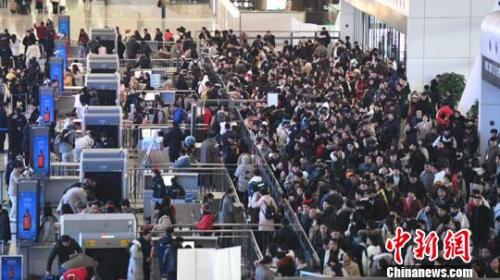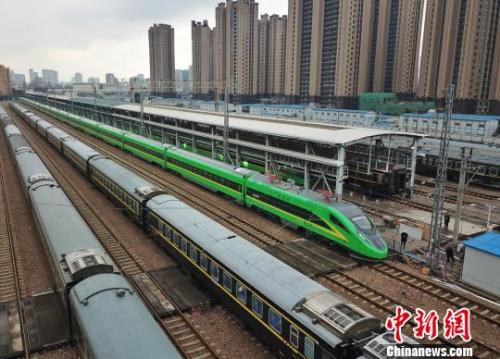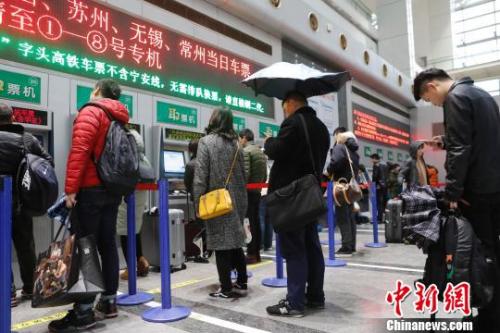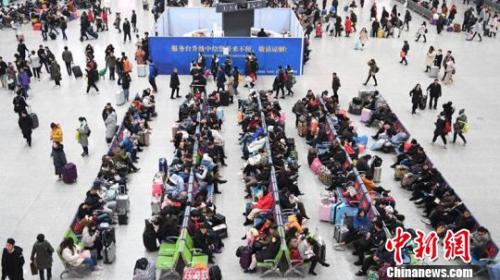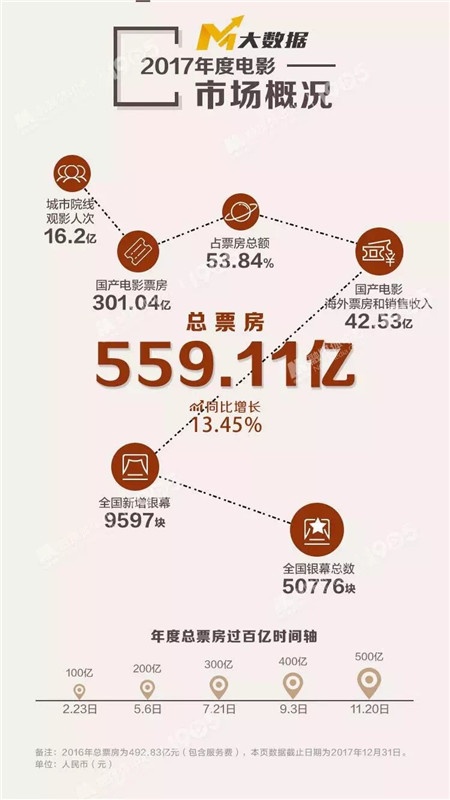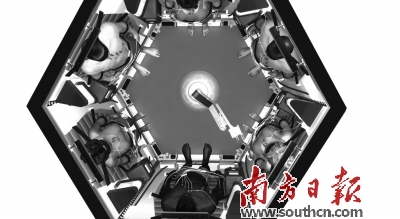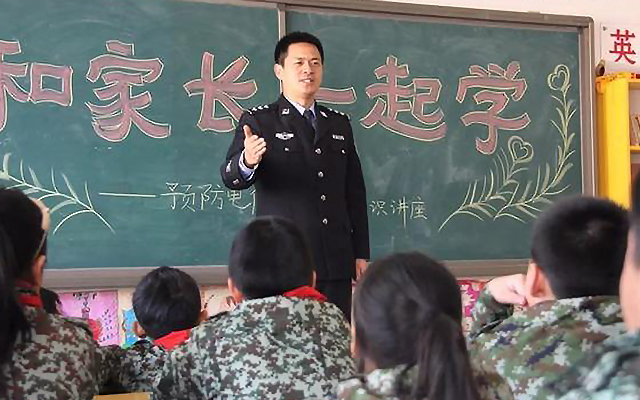Yue Fu Han [2017] No.53
Guangdong Provincial People’s Government on Printing and Distributing the Nature of Guangdong Province
Notice of emergency plan for disaster relief
People’s governments at the local level and listed, people’s governments of counties (cities, districts), departments and institutions directly under the provincial government:
With the consent of the provincial people’s government, the newly revised Emergency Plan for Natural Disaster Relief in Guangdong Province is hereby printed and distributed to you, please earnestly organize its implementation.
people’s government of guangdong province
March 10, 2017
Emergency Plan for Natural Disaster Relief in Guangdong Province
Catalogue
1 General rules
1.1 Purpose of compilation
1.2 Compilation basis
1.3 Scope of application
1.4 working principles
2 organizational system
2.1 Provincial Disaster Reduction Committee
2.2 Provincial Disaster Reduction Committee Office
2.3 Local natural disaster relief and emergency comprehensive coordination institutions
2.4 Committee of Experts
3 operating mechanism
3.1 Early warning
3.1.1 Early warning and forecast
3.1.2 Early warning response
3.2 Emergency treatment
3.2.1 Information Report
3.2.2 Response startup
3.2.3 Disposal measures
3.2.4 Emergency termination
3.3 Post-disposal
3.3.1 Life assistance in transition period
3.3.2 Winter and spring rescue
3.3.3 Restoration and reconstruction of damaged houses
3.4 Information release
4 emergency support
4.1 Human security
4.2 Financial guarantee
4.3 Material support
4.4 Traffic Security
4.5 Facility guarantee
4.6 Communication Guarantee
4.7 Mobilization guarantee
5 supervision and management
5.1 Plan drill
5.2 missionary training
5.3 Responsibility and Reward and Punishment
6 supplementary provisions
7 accessories
Emergency response standard for natural disaster relief
7.1 Class I response
7.2 Level II response
7.3 Class III response
7.4 Class IV response
1 General rules
1.1 Purpose of compilation
Establish and improve our province’s emergency system and operation mechanism to deal with sudden natural disasters, standardize emergency rescue behavior, improve emergency rescue ability, implement emergency rescue efficiently and orderly, minimize the loss of people’s lives and property, ensure the basic livelihood of the affected people, and maintain social stability in the disaster areas.
1.2 Compilation basis
According to People’s Republic of China (PRC) Emergency Response Law, People’s Republic of China (PRC) Flood Control Law, People’s Republic of China (PRC) Earthquake Prevention and Disaster Mitigation Law, People’s Republic of China (PRC) Meteorological Law, Charity Law of the People’s Republic of China, Regulations on Natural Disaster Relief, National Overall Emergency Plan for Public Emergencies, National Emergency Plan for Natural Disaster Relief, Management Measures for Disaster Relief Donations, This plan is formulated in accordance with the Guiding Opinions of the Ministry of Civil Affairs on Supporting and Guiding Social Forces to Participate in Disaster Relief in an Orderly Way, the Regulations on Emergency Response in Guangdong Province, the Regulations on Promoting Social Forces to Participate in Disaster Relief in Guangdong Province, the Overall Emergency Plan for Emergencies in Guangdong Province, the Provisions on Natural Disaster Relief in Guangdong Province and other laws, regulations and relevant provisions.
1.3 Scope of application
This plan is applicable to the provincial emergency rescue work of natural disasters in our province.
In case of other types of emergencies, emergency rescue work can be carried out according to this plan as needed.
1.4 working principles
(1) People-oriented, reducing harm. Fully perform their functions, take the protection of people’s health and the safety of life and property as the primary task of emergency rescue, and ensure the basic livelihood of the affected people.
(2) Unified leadership and comprehensive coordination. Give full play to the guiding and coordinating role of the Provincial Disaster Reduction Committee (hereinafter referred to as the Provincial Disaster Reduction Committee), strengthen the cooperation and cooperation of the member units of the Provincial Disaster Reduction Committee in the emergency rescue work of natural disasters, and form an emergency rescue mechanism with unified leadership, clear division of labor, coordination and order, close cooperation and efficient operation.
(3) government-led, social participation. Adhere to government leadership and social mutual assistance, realize mass self-help and social participation, and give full play to the role of grassroots mass autonomous organizations and public welfare social organizations.
2 organizational system
2.1 Provincial Disaster Reduction Committee
The Provincial Disaster Reduction Committee is a comprehensive coordination body for natural disaster relief in the province, responsible for organizing and leading the natural disaster relief work in the province, coordinating and carrying out major natural disaster relief activities, and guiding all localities to carry out disaster reduction and disaster relief work.
Chair: Deputy Governor in charge.
Deputy Director: Deputy Secretary-General in charge of the provincial government and Director of the Provincial Civil Affairs Department.
Members: Propaganda Department of Provincial Party Committee, Provincial Development and Reform Commission (Provincial Grain Bureau), Economic and Information Commission, Education Department, Science and Technology Department, Public Security Department, Civil Affairs Department, Finance Department, Human Resources and Social Security Department, Land and Resources Department, Environmental Protection Department, Housing and Urban-Rural Construction Department, Transportation Department, Water Resources Department, Agriculture Department, Forestry Department, Marine Fisheries Department, Commerce Department, Health and Family Planning Commission, Foreign Affairs Office, Provincial Press, Publication, Radio, Film and Television Bureau. Southern Energy Supervision Bureau, Provincial Communications Administration, Provincial Seismological Bureau, Provincial Meteorological Bureau, Guangzhou Railway Group Corporation, Southern Airlines Corporation, Provincial Military Region, Provincial Armed Police Corps, Provincial Association for Science and Technology, and Red Cross Society.
According to the emergency response level, all member units cooperate with the natural disaster relief work in accordance with the unified deployment and respective responsibilities of the Provincial Disaster Reduction Committee.
Responsibilities of member units of the Provincial Disaster Reduction Committee:
(1) Propaganda Department of the Provincial Party Committee: responsible for coordinating and guiding the news release and publicity of disaster relief work and guiding public opinion.
(2) Provincial Development and Reform Commission (Provincial Grain Bureau): responsible for arranging major disaster prevention and post-disaster reconstruction infrastructure projects and coordinating the implementation of construction funds; Cooperate with the Provincial Civil Affairs Department to organize and coordinate the storage, allocation and supply of disaster relief food to ensure the food supply during the disaster; Work with the Provincial Department of Agriculture to ensure market supply and price stability during the disaster; In conjunction with the Provincial Department of Finance, the Department of Agriculture and other units to implement the winter and spring relief, disaster relief policy.
(3) Provincial Economic and Information Technology Commission: responsible for coordinating the supply guarantee of important materials such as coal, electricity and oil in disaster areas and the emergency call of provincial medical reserves; Organize and coordinate the production and supply of rescue equipment, protection and disinfection supplies and medicines; Unified configuration and management of radio frequency resources to protect the safety of related legal radio frequencies.
(4) Provincial Department of Education: responsible for coordinating and guiding the disaster-stricken areas to do a good job in resuming schooling in post-disaster schools (excluding technical schools, the same below) and kindergartens; Coordinate the relevant units to jointly do a good job in the restoration and reconstruction of school buildings after the disaster; Organize and guide all localities to publicize, educate and drill the knowledge of disaster prevention and reduction for school students and children.
(5) Provincial Science and Technology Department: responsible for arranging disaster prevention and mitigation and major disaster relief research projects.
(6) Provincial Public Security Department: responsible for maintaining public order in disaster areas and assisting in organizing the emergency transfer of people in disaster areas; Do a good job in traffic guidance to ensure safe and smooth road traffic; Actively cooperate with disaster relief and emergency rescue work; Investigate and deal with people who spread rumors and create panic on the Internet; Guide all localities to carry out fire safety knowledge publicity, education and drills.
(7) Provincial Civil Affairs Department: responsible for organizing and coordinating disaster relief work; To verify and report the disaster situation in the whole province and release disaster information; To guide the resettlement and condolences to the victims; Supervise and guide the affected people to provide food, clothing, housing, medical care and other life assistance; In conjunction with the Provincial Department of Finance, jointly apply to the Ministry of Civil Affairs and the Ministry of Finance for central disaster relief subsidy funds, timely allocate provincial natural disaster living subsidy funds according to local applications and the verification of the disaster situation by relevant units, and allocate and manage the central allocation and provincial-level disaster relief funds and materials; Organize and guide disaster relief donations, organize and carry out cross-regional or provincial disaster relief donations as appropriate, and uniformly distribute provincial disaster relief donations and provincial disaster relief donations; Guide the restoration and reconstruction of houses collapsed due to disasters; Reserve provincial disaster relief materials; To undertake the relevant duties of the office of the Provincial Disaster Reduction Committee.
(8) Provincial Department of Finance: responsible for the budget arrangement and fund allocation of disaster reduction and relief funds; In conjunction with the Provincial Civil Affairs Department, jointly apply to the Ministry of Civil Affairs and the Ministry of Finance for central disaster relief subsidy funds; According to the local application and the approval of the relevant units on the disaster situation, timely allocate provincial natural disaster living allowance funds, supervise and inspect the use of disaster relief funds in time, and ensure that disaster relief funds are in place quickly; In conjunction with the Provincial Development and Reform Commission, the Department of Agriculture and other units, we will implement policies such as work-for-work relief and disaster relief in winter and spring relief.
(9) Provincial Department of Human Resources and Social Security: responsible for coordinating and guiding the disaster-stricken areas to do a good job in resuming technical schools after the disaster; Coordinate the relevant units to jointly do a good job in the restoration and reconstruction of school buildings after the disaster; Organize and guide all localities to publicize, educate and practice the knowledge of disaster prevention and reduction for technical school students.
(10) Provincial Department of Land and Resources: responsible for organizing, coordinating, guiding and supervising the prevention and control of geological disasters; Compilation of provincial geological disaster prevention and control plans and annual geological disaster prevention and control plans; To carry out the investigation of major sudden geological disasters, organize experts to analyze and demonstrate the causes of major geological disasters and determine the responsibility for governance; Establish and improve the provincial geological disaster early warning system and group monitoring and prevention system; Assist in emergency rescue, disaster relief and after-treatment work; Give priority to the examination and approval procedures for land use related to post-disaster reconstruction according to regulations; Organize publicity, education and drills on geological disaster prevention and mitigation knowledge.
(11) Provincial Environmental Protection Department: responsible for organizing the formulation and supervising the implementation of pollution prevention and control plans for key areas and river basins with frequent disasters and environmental protection plans for drinking water sources; Take the lead in coordinating the investigation and handling of major environmental incidents caused by natural disasters and the prevention and control of environmental pollution in key areas and river basins, and carry out environmental monitoring and release relevant environmental information during the disaster period; In conjunction with the Provincial Water Resources Department and the Health and Family Planning Commission, do a good job in environmental monitoring and supervision of drinking water sources in disaster areas and guide the environmental protection of drinking water sources; Guide to carry out environmental protection, nuclear emergency knowledge publicity and education and drills.
(12) Provincial Department of Housing and Urban-Rural Development: responsible for post-disaster urban and rural planning and engineering construction management, organizing the formulation of seismic fortification standards for various housing buildings and ancillary facilities and municipal engineering construction and supervising their implementation; To guide the quality and safety appraisal of houses and municipal public infrastructure after the disaster, as well as the management of post-disaster recovery and reconstruction planning and engineering design and construction; Formulate plans for the construction of emergency shelters and guide all localities to carry out the construction of emergency shelters.
(13) Provincial Department of Transportation: responsible for strengthening the organization and coordination of disaster relief materials transportation and doing a good job in transportation security; Organize and coordinate the road and waterway transportation of disaster relief personnel and materials, and handle the priority procedures for vehicles transporting disaster relief emergency materials; Provide the transportation needed to transfer the affected people and organize the emergency repair of the destroyed roads.
(14) Provincial Water Resources Department: responsible for organizing, coordinating, supervising and directing flood control, drought prevention, wind prevention, frost prevention and emergency rescue of water conservancy projects in the whole province; Implement flood control and drought prevention dispatching and emergency water quantity dispatching for important rivers, lakes and important water projects; Organize the repair of water conservancy facilities after the disaster and reserve flood control and emergency materials; Organize and guide the publicity, training and drills of flood, drought, typhoon disaster prevention and risk avoidance in the whole province.
(15) Provincial Department of Agriculture: responsible for monitoring and early warning of major animal epidemics and major crop diseases and insect pests, formulating prevention and control countermeasures, and organizing and guiding all localities to carry out prevention and control work; Organize the storage and allocation of disaster relief materials such as seeds, animal vaccines and disinfection drugs, and guide agricultural disaster relief and post-disaster recovery; In conjunction with the provincial development and Reform Commission to ensure the market supply and price stability of agricultural products during the disaster; In conjunction with the provincial development and Reform Commission, the Department of Finance and other units to implement the winter and spring relief policies such as work for relief and disaster relief; Organize the popularization of agricultural disaster prevention and mitigation technology and knowledge propaganda.
(16) Provincial Forestry Department: responsible for coordinating, guiding and supervising forest fire fighting in the province and storing relevant emergency materials; Organize the prevention and control of major forestry pest disasters; Organize and guide the rescue and breeding of rare and endangered wild animals and plants and the restoration and development of wildlife habitats; Carry out publicity and education on forest fire prevention and mitigation knowledge and forest fire drill.
(17) Provincial Department of Marine Fisheries: responsible for organizing the observation and forecast of marine environment such as storm surge (disastrous waves), red tide and tsunami, and marine disaster prevention and mitigation; Organize rescue and relief work for marine fishing boats, fishing ports, aquaculture facilities in coastal waters and aquatic products; Organize publicity and education on marine disaster prevention and mitigation knowledge.
(18) Provincial Department of Commerce: responsible for organizing the market supply of some daily necessities in disaster areas; Do a good job in evaluating the losses caused by disasters in commerce and trade.
(19) Provincial Health and Family Planning Commission: responsible for rational allocation of medical and health resources, timely organizing medical and health teams to go to disaster areas to assist in medical treatment, health and epidemic prevention and psychological assistance in disaster areas; Strengthen the supervision of drinking water hygiene in disaster areas; Do a good job in emergency rescue of public health events; Carry out publicity training and drills on health and epidemic prevention and medical first aid knowledge.
(20) Foreign Affairs Office of the province: assist the civil affairs departments to do a good job in disaster relief liaison with relevant countries, embassies and consulates in China, international organizations and relevant representative offices in China and related foreign-related work.
(21) Provincial Press, Publication, Radio, Film and Television Bureau: responsible for organizing radio stations, television stations and other news units to publicize and report on emergency rescue and disaster relief, disaster prevention and mitigation.
(22) Provincial Safety Supervision Bureau: responsible for guiding and coordinating the emergency rescue work of production safety; Organize and guide the publicity, education and drills of safety production knowledge.
(23) Provincial Bureau of Statistics: responsible for assisting relevant units to collect, summarize, analyze, sort out and report disaster information in accordance with the Statistical System of Natural Disasters formulated by the Ministry of Civil Affairs and the National Bureau of Statistics; Provide statistical information and advice to relevant units.
(24) Provincial Finance Office: responsible for assisting the government to continuously expand the coverage of disaster insurance, assisting Guangdong Insurance Regulatory Bureau to strengthen the supervision of insurance agencies, guiding insurance agencies to develop disaster insurance products, and doing a good job in daily disaster prevention and mitigation, post-disaster survey and claim settlement.
(25) Provincial Academy of Sciences: responsible for strengthening the research on policies and theories related to disaster prevention, mitigation and relief, and providing scientific and technological support for disaster reduction and relief work.
(26) Southern Energy Supervision Bureau: responsible for guiding and coordinating relevant power enterprises to do power emergency repair, repair damaged power facilities, adjust the operation mode of power grid, and ensure the safe and stable operation of power system.
(27) Provincial Communications Administration: responsible for coordinating all basic telecommunications operators to cooperate with relevant units to timely and accurately send early warning and forecasting information of natural disasters; Restore the damaged communication facilities as soon as possible, and do a good job in emergency support of the public communication network at the disaster site.
(28) Provincial Seismological Bureau: responsible for organizing and coordinating the monitoring of strong aftershocks at the earthquake site, analyzing the development trend of earthquakes, and proposing preventive measures for strong aftershocks; Coordinate the monitoring work between the earthquake zone and neighboring provinces (regions); Organize earthquake disaster investigation at the earthquake site in conjunction with relevant units to determine the earthquake intensity; Timely assess earthquake disaster losses and put forward disaster relief opinions, and organize and coordinate earthquake disaster emergency rescue work; Participate in the planning of earthquake recovery and reconstruction; Carry out publicity, education and drills on earthquake disaster prevention and mitigation knowledge.
(29) Provincial Meteorological Bureau: responsible for issuing severe weather forecasts and early warnings and providing services for disaster prevention and relief; Organize the investigation, evaluation, identification, release and publicity of major meteorological disasters; Carry out publicity and education on meteorological disaster prevention and mitigation knowledge.
(30) Guangzhou Railway Group Corporation: responsible for the railway transportation guarantee of relief materials during the disaster; Timely repair railways and related equipment damaged by disasters.
(31) China Southern Airlines Co., Ltd.: responsible for the air transportation of relief materials during the disaster.
(32) Provincial Military Region: Responsible for organizing and coordinating troops stationed in Guangdong and militia reserve forces to participate in emergency rescue and disaster relief.
(33) Provincial Armed Police Corps: responsible for protecting the safety of important targets and rescuing, transferring and evacuating the victims; Rescue and transport important materials; Participate in the closure and control of epidemic areas; Under the unified leadership of the provincial party committee and the provincial government, and under the organization and coordination of the provincial public security department, participate in handling mass incidents caused by disasters and accidents, and maintain social stability in disaster areas.
(34) Provincial Association for Science and Technology: responsible for coordinating the scientific and technological service activities for disaster relief of its affiliated societies; Organize affiliated societies to carry out popular science propaganda on disaster prevention and reduction.
(35) Provincial Red Cross Society: responsible for organizing volunteers and social forces to participate in disaster relief, and carrying out disaster relief fundraising and disaster relief activities according to law; Participate in disaster relief and treatment of the wounded (including psychological rescue of the victims and the wounded); According to the unified deployment of the provincial people’s government, participate in post-disaster reconstruction work.
2.2 Provincial Disaster Reduction Committee Office
The office of the Provincial Disaster Reduction Committee is located in the Provincial Civil Affairs Department, and the director of the office is concurrently the deputy director in charge of the Provincial Civil Affairs Department. Main responsibilities of the office: responsible for formulating disaster relief policies; Organizing and coordinating disaster relief work; Organize the construction of emergency system for natural disaster relief; Disaster verification and unified reporting and release; Management, distribution and supervision of the use of disaster relief funds and materials; Organize and coordinate the emergency transfer and resettlement of victims, subsidies for the restoration and reconstruction of damaged houses of rural victims and life assistance for the affected people in conjunction with relevant parties; Guide the reserve of disaster relief materials; Organize and guide disaster relief donations; Work out disaster reduction plans with relevant units.
2.3 Local natural disaster relief and emergency comprehensive coordination institutions
People’s governments of cities and counties (cities, districts) at all levels (hereinafter referred to as people’s governments at all levels) should establish and improve the corresponding comprehensive coordination mechanism for natural disaster relief, start the corresponding emergency response in time, and organize the rescue work. The relevant units of the province to guide.
2.4 Committee of Experts
The Provincial Disaster Reduction Committee set up an expert committee to provide policy advice and suggestions on major decisions and important plans of disaster reduction and relief work in the province, and to provide advice on disaster assessment, emergency rescue and post-disaster relief of major natural disasters in the province.
3 operating mechanism
3.1 Early warning
3.1.1 Early warning and forecast
Land and resources, water conservancy, agriculture, forestry, earthquake, meteorology, ocean and other units should promptly report the early warning and forecasting information of natural disasters to the office of the Provincial Disaster Reduction Committee and the member units of the Provincial Disaster Reduction Committee that perform disaster relief duties, and the surveying and mapping department should provide geographic information data in a timely manner as needed. Disaster warning information mainly includes: geological disaster warning information (responsible for the Provincial Department of Land and Resources), flood and drought warning information (responsible for the Provincial Department of Water Resources), major biological disaster warning information of crops (responsible for the Provincial Department of Agriculture), forest fire and forestry biological disaster warning information (responsible for the Provincial Forestry Department), earthquake trend prediction information (responsible for the Provincial Seismological Bureau), meteorological disaster warning information (responsible for the Provincial Meteorological Bureau) and marine disaster warning information (responsible for the Provincial Department of Marine Fisheries).
The office of the Provincial Disaster Reduction Committee timely summarizes all kinds of disaster early warning and forecasting information and informs member units and relevant regions.
3.1.2 Early warning response
According to the early warning and forecasting information of natural disasters, combined with the natural conditions, population and socio-economic conditions of the areas that may be affected, the office of the Provincial Disaster Reduction Committee pre-evaluates the possible disasters. May threaten people’s lives and property safety, affect the basic life, need to take countermeasures in advance, the office of the Provincial Disaster Reduction Committee should promptly start early warning response, and take one or more of the following measures as appropriate:
(1) Inform the disaster reduction committee or civil affairs department at the prefecture level that may be affected of the early warning information and put forward the requirements for disaster relief.
(2) Strengthen emergency watch, closely follow the development trend of disasters, dynamically evaluate the possible losses caused by disasters, and adjust relevant measures in time.
(3) Notify the relevant provincial disaster relief materials reserve to prepare disaster relief materials and allocate them in advance in case of emergency; Start the emergency linkage mechanism with transportation, railways, civil aviation and other departments and units, and prepare for the dispatch of relief materials.
(4) Send an early warning and response working group to learn about disaster risks on the spot and inspect and guide various disaster relief preparations.
(5) report the start of early warning response to the provincial government, the person in charge of the Provincial Disaster Reduction Committee and the member units of the Provincial Disaster Reduction Committee.
(6) release the start of early warning response to the society.
After the disaster risk is released or evolved into a disaster, the office of the Provincial Disaster Reduction Committee terminates the early warning response.
3.2 Emergency treatment
3.2.1 Information Report
All relevant units shall, in accordance with their duties, collect and provide information on the occurrence, development, loss and defense of disasters, and report to the local people’s government or the comprehensive emergency coordination agencies for natural disaster relief at all levels in a timely manner. Information on particularly serious and major natural disasters shall be reported to the provincial people’s government in a timely manner according to regulations.
The civil affairs departments of the people’s governments at or above the county level shall do a good job in the collection, summary, analysis, reporting and inter-departmental sharing of disaster information in accordance with the Statistical System for Natural Disasters and the Statistical System for Losses of Particularly Major Natural Disasters.
3.2.2 Response startup
According to the scope of natural disasters, the degree of harm, etc., the emergency response of provincial natural disaster relief is divided into four grades: I, II, ш and IV.
Level I response, unified organization and leadership by the director of the Provincial Disaster Reduction Committee; Level II and III responses are organized and coordinated by the Deputy Director of the Provincial Disaster Reduction Committee (Director of the Provincial Civil Affairs Department); The level IV response is organized and coordinated by the director of the Office of the Provincial Disaster Reduction Committee (deputy director of the Provincial Civil Affairs Department).
For areas with particularly weak rescue capacity and other special circumstances, the criteria for starting the emergency response of natural disaster relief in the province can be adjusted as appropriate.
(1) Class I response
When a particularly serious natural disaster occurs or a disaster report is received, the Provincial Disaster Reduction Committee immediately organizes the members and experts of the Provincial Disaster Reduction Committee to conduct analysis and judgment, comprehensively evaluate the disaster impact and its development trend, and report to the provincial people’s government for decision to start Class I emergency response. The provincial people’s government will issue an emergency mobilization order and issue an order to start relevant emergency procedures to all relevant units.
(2) Level II response
When a major natural disaster occurs or a disaster report is received, the Provincial Disaster Reduction Committee immediately organizes the members and experts of the Provincial Disaster Reduction Committee to make analysis and judgment, and comprehensively evaluates the impact of the disaster and its development trend. The director of the Provincial Disaster Reduction Committee decides to start the level II emergency response, and issues an order to start the relevant emergency procedures to all relevant units.
(3) Class ш response
Major natural disasters occur, or a report of major natural disasters is received. The office of the Provincial Disaster Reduction Committee immediately conducts a comprehensive assessment of the disaster impact and its development trend, and the deputy director of the Provincial Disaster Reduction Committee decides to start the emergency response at level ш, and issues an order to start relevant emergency procedures to all relevant units.
(4) Level IV response
When a general natural disaster occurs or a disaster report is received, the office of the Provincial Disaster Reduction Committee immediately conducts a comprehensive assessment of the disaster impact and its development trend, and the director of the office of the Provincial Disaster Reduction Committee decides to start the level IV emergency response and issue an order to start the relevant emergency procedures to all relevant units.
3.2.3 Disposal measures
(1) The leaders of the Provincial Disaster Reduction Committee led the responsible comrades of the relevant units to rush to the disaster area to express their condolences to the affected people, verify the disaster situation and guide the disaster relief work.
(2) The Office of the Provincial Disaster Reduction Committee organizes emergency response consultation at the corresponding level, with the participation of member units of the Provincial Disaster Reduction Committee, expert committees and relevant responsible comrades in the affected areas, deciding on major issues in disaster relief, analyzing the disaster situation, and studying and implementing disaster relief support measures.
(3) The office of the Provincial Disaster Reduction Committee keeps close contact with the disaster area and keeps abreast of the dynamic information of the disaster situation and disaster relief work; Organize disaster consultation, uniformly release the disaster situation in accordance with relevant regulations, timely release the needs of the disaster areas, and publish the specific contact departments and contact information of the disaster areas and social forces. The relevant units shall do a good job in disaster monitoring, early warning, forecasting and news reporting in accordance with their duties. When necessary, the expert committee of the Provincial Disaster Reduction Committee organizes experts to conduct real-time assessment.
(4) Public security, civil affairs and other departments should promptly organize the emergency transfer and resettlement of the people in the disaster area, and the health administrative department should promptly organize the medical treatment and health and disease prevention work of the people affected by the disaster.
(5) Transportation, railways, civil aviation and other departments (units) should organize and coordinate the transportation of relief materials, rescue equipment, protective and disinfectant supplies, medical supplies and drugs. Civil affairs departments urgently allocate living relief materials for disaster areas, implement emergency measures for disaster relief, and distribute relief funds and materials.
(6) The Provincial Department of Civil Affairs and the Department of Finance shall timely allocate provincial natural disaster living allowance funds according to the local application and the verification of the disaster situation by the relevant units, and apply to the Ministry of Civil Affairs and the Ministry of Finance for the central disaster relief subsidy funds.
(7) The civil affairs department shall organize cross-regional or provincial disaster relief donation activities as the case may be, and uniformly receive, manage and distribute international disaster relief donations.
(8) After the disaster situation is stable, the office of the Provincial Disaster Reduction Committee will organize the assessment, verification and unified release of natural disaster losses according to relevant regulations, carry out social and psychological impact assessment of disasters, and organize post-disaster relief and psychological assistance as needed.
(9) Other member units of the Provincial Disaster Reduction Committee shall, in accordance with the division of responsibilities, do a good job in relevant work.
3.2.4 Emergency termination
The disaster situation is stable, and the emergency rescue work is over. After assessment, the impact of the disaster will no longer expand or has been alleviated in a short period of time. The office of the Provincial Disaster Reduction Committee puts forward suggestions, and the unit that announced the start of the emergency response decided to terminate the emergency response.
3.3 Post-disposal
3.3.1 Life assistance in transition period
(1) After the occurrence of major natural disasters, the office of the Provincial Disaster Reduction Committee organized relevant units, responsible comrades and experts of the civil affairs departments in the disaster areas to assess the needs of life assistance in the transition period in the disaster areas.
(2) the Provincial Department of Finance and the Civil Affairs Department timely allocated transitional life assistance funds; The Provincial Civil Affairs Department guides the people’s governments in disaster areas to do a good job in the verification, fund distribution and supervision of life assistance personnel during the transition period.
(3) The Office of the Provincial Disaster Reduction Committee shall, jointly with relevant units, supervise and inspect the implementation of policies and measures for life assistance in the transitional period in the disaster areas, and regularly report the relief work in the disaster areas.
(4) The office of the Provincial Disaster Reduction Committee shall, after the end of the transitional life assistance work, timely organize personnel to evaluate the performance of the assistance.
3.3.2 Winter and spring rescue
In the winter of the year and the spring of the following year after natural disasters, the people’s governments in the affected areas provide basic living assistance for the affected people who have difficulties in living.
(1) Civil affairs departments at all levels should, under the organization and guidance of the Provincial Civil Affairs Department, start the investigation and evaluation of the living difficulties of the affected people in winter and spring in late September each year, and verify the relevant situation.
(2) The civil affairs departments at the county level in the disaster-stricken areas shall, before the end of October each year, make statistics and assessment on the basic living difficulties and needs of the victims in this administrative region in the winter of that year and the spring of the following year, verify the relief objects, prepare the work ledger, formulate the relief work plan, organize the implementation after the approval of the people’s government at the same level, and report it to the civil affairs department at the next higher level for the record.
(3) According to the request report of the people’s government of the county (city, district) directly under the provincial government or the civil affairs and financial departments at the prefecture level, combined with the disaster assessment, the Provincial Department of Civil Affairs and the Department of Finance determine the fund subsidy scheme, and timely allocate the provincial natural disaster living subsidy funds to solve the basic living difficulties of the people suffering from disasters in winter and spring.
(4) The Provincial Civil Affairs Department provided winter clothes and quilts for the affected people through government procurement, counterpart support, disaster relief donations, etc., and organized relevant units and experts to evaluate the performance of the province’s mid-term and final relief work during winter and spring.
3.3.3 Restoration and reconstruction of damaged houses
The people’s government at the county level is responsible for organizing the implementation of the restoration and reconstruction of houses damaged by disasters. Recovery and reconstruction should fully respect the wishes of the people in the disaster areas, and the affected households should build their own homes. Housing funds can be solved through government assistance, social mutual assistance, neighborhood helpers, work-for-relief, self-lending, preferential policies and other ways. Reconstruction planning and housing design should be based on local conditions, scientific layout, full consideration of disaster factors, and reasonable disaster reduction and avoidance.
(1) The Provincial Civil Affairs Department, according to the verification of damaged housing by the civil affairs departments of counties (cities, districts) directly under the jurisdiction of the province at prefecture level, organizes an assessment team as appropriate, and makes a comprehensive assessment of damaged housing due to disasters with reference to the assessment data of other relevant units.
(2) The Provincial Civil Affairs Department shall, after receiving the application report from the civil affairs department of the county (city, district) directly under the jurisdiction of the affected prefecture-level city on the subsidy funds for the restoration and reconstruction of damaged housing, put forward suggestions on financial subsidies according to the evaluation results of damaged housing and the subsidy standards for the restoration and reconstruction of damaged housing at the provincial level, and submit them to the Provincial Department of Finance for review and release.
(3) After the reconstruction of damaged housing, civil affairs departments at all levels shall conduct performance evaluation on the management of local damaged housing restoration and reconstruction subsidy funds by means of on-the-spot investigation and sampling investigation, and report the evaluation results to the civil affairs department at the next higher level. The Provincial Department of Civil Affairs shall, after receiving the performance evaluation of the restoration and reconstruction of damaged housing in its administrative area reported by the civil affairs departments of counties (cities, districts) directly under the jurisdiction of the province at the prefecture level, organize the inspection team to conduct a second evaluation of the management of subsidy funds for the restoration and reconstruction of damaged housing in the province by conducting spot checks.
(4) The housing and urban-rural construction department is responsible for the technical support and quality supervision of damaged housing restoration and reconstruction. Surveying and mapping geographic information department is responsible for surveying and mapping geographic information support services for post-disaster recovery and reconstruction. Other relevant departments shall, in accordance with their respective responsibilities, do a good job in reconstruction planning and site selection, formulate preferential policies, and support housing reconstruction.
(5) The restoration and reconstruction organized by the provincial people’s government shall be carried out in accordance with relevant regulations.
3.4 Information release
Information release should adhere to the principles of seeking truth from facts, timeliness, accuracy, openness and transparency. Information release forms include authorized release, providing press releases, organizing reports, accepting interviews with reporters, holding press conferences, etc., and releasing information through news media, key news websites, relevant government websites and mobile phone short messages. In accordance with the relevant provisions of the state and province.
Before the disaster situation is stabilized, the comprehensive coordination agency or civil affairs department of natural disaster relief in the affected areas should promptly release to the society the situation of casualties, property losses and natural disaster relief work dynamics, effectiveness and next work arrangements; After the disaster situation is stable, the people’s governments at or above the county level in the affected areas or the comprehensive coordination agencies for natural disaster relief should evaluate, verify and release the natural disaster losses according to the relevant provisions.
4 emergency support
4.1 Human security
Strengthen the construction of various professional disaster relief teams and disaster management personnel to improve the ability of natural disaster relief; Support, cultivate and develop relevant social organizations and volunteer teams, and encourage and guide them to play an active role in disaster relief work.
4.2 Financial guarantee
The Provincial Development and Reform Commission, the Department of Finance, the Civil Affairs Department and other departments arrange provincial disaster relief fund budgets according to the Budget Law of the People’s Republic of China and the Regulations on Natural Disaster Relief, and establish and improve the provincial and local disaster relief fund sharing mechanism according to the principles of graded responsibility for disaster relief work, graded burden of disaster relief funds and locality-oriented, and urge local governments to increase investment in disaster relief funds.
(1) The people’s governments at or above the county level will incorporate natural disaster relief into the national economic and social development plan, establish and improve the fund and material guarantee mechanism that is compatible with the needs of natural disaster relief, and incorporate natural disaster relief funds and natural disaster relief funds into the fiscal budget.
(2) The provincial finance comprehensively considers the disaster prediction of relevant departments and the actual expenditure of the previous year, and reasonably arranges the provincial natural disaster living allowance funds to help solve the basic living difficulties of the people affected by particularly serious and major natural disasters.
(3) Provincial and local governments timely adjust the natural disaster relief policies and related subsidy standards according to the level of economic and social development, the cost of living assistance for natural disasters and other factors.
4.3 Material support
(1) All localities and relevant units should strengthen the construction of disaster relief materials reserve network in the province, integrate the existing disaster relief materials and reserves, and implement classification and classification management for the disaster relief materials and reserves.
(2) The province has set up a disaster relief material reserve center warehouse and four provincial-level regional warehouses in eastern Guangdong, western Guangdong, northern Guangdong and the Pearl River Delta region, and established and improved disaster relief material reserve warehouses and social donation receiving stations (points) at all levels. Disaster relief materials storage warehouses at all levels should reserve necessary disaster relief materials and replenish them in time.
(3) All localities and relevant units should establish a system of consigning relief materials and a list of manufacturers of relief materials, and establish and improve the systems of emergency procurement, emergency allocation and transportation of relief materials.
(4) People’s governments at or above the county level should encourage and guide communities, enterprises, institutions and families to reserve basic natural disaster emergency self-help materials and daily necessities.
4.4 Traffic Security
It is necessary to strengthen comprehensive transportation management in emergency situations, establish a transportation guarantee system for natural disaster emergency rescue, a mechanism for requisition of social transportation tools and a "green channel" mechanism for emergency rescue, and realize unified command and dispatch of transportation for natural disaster emergency rescue in the whole province and regions. Railway, highway, water transport and aviation departments (units) shall ensure that natural disaster rescue personnel and those who are harmed by natural disasters, rescue materials and rescue equipment are given priority in transportation.
4.5 Facility guarantee
The people’s governments at or above the county level shall, according to the population density, distribution and city size of the area under their jurisdiction, make use of public facilities such as parks, squares, stadiums and gymnasiums, make overall plans for the construction of emergency shelters, set up unified and standardized obvious signs, reserve necessary materials and provide necessary medical conditions.
4.6 Communication Guarantee
Provincial Economic and Information Technology Commission, Provincial Press, Publication, Radio, Film and Television Bureau, Provincial Communications Administration and other relevant units should ensure the smooth information channels of natural disaster emergency rescue work according to law, improve the public communication network, establish an emergency communication system combining wired and wireless, and improve the emergency communication guarantee system to ensure the smooth communication of emergency response work.
4.7 Mobilization guarantee
Scientifically organize and effectively guide, and give full play to the role of social forces such as village (neighborhood) committees, enterprises and institutions, social organizations and volunteers in disaster reduction and relief. Formulate and improve policies related to the management of disaster relief donations, establish and improve the mobilization, operation, supervision and management mechanism of disaster relief donations, and standardize the work of all aspects of disaster relief donations, such as organization and launch, receipt, statistics, distribution, use, publicity and feedback. We will improve the management mechanism for receiving overseas disaster relief donations, and improve the counterpart support mechanism for natural disaster relief in non-disaster areas and light disaster areas to support the hardest hit areas.
5 supervision and management
5.1 Plan drill
The Provincial Civil Affairs Department is responsible for regularly organizing emergency drills of this plan.
5.2 missionary training
People’s governments at all levels and relevant units should actively use news media such as television, radio, newspapers and periodicals to widely publicize relevant laws and regulations, emergency plans and public knowledge of hedging, self-help and mutual rescue, and enhance public awareness of disaster prevention and mitigation. Provincial Civil Affairs Department and other relevant units should actively promote community disaster reduction activities and promote the construction of disaster reduction demonstration communities. Organize the training of local government leaders, disaster management personnel, professional emergency rescue teams, social organizations and volunteers.
5.3 Responsibility and Reward and Punishment
Advanced collectives and individuals who have made outstanding contributions to the relief work of sudden natural disasters shall be commended and rewarded in accordance with the relevant provisions of the state and province. Those responsible for dereliction of duty, dereliction of duty and dereliction of duty should be seriously investigated for responsibility in accordance with relevant regulations. If the case constitutes a crime, criminal responsibility should be investigated according to law.
6 supplementary provisions
(1) In the expression of relevant quantities in this plan, "above" includes this number, and "below" does not include this number.
(2) The "natural disasters" in this plan mainly include drought, flood, typhoon, wind and hail, low-temperature freezing, high temperature, lightning and other meteorological disasters, earthquake disasters, geological disasters such as mountain collapses, landslides and mudslides, marine disasters such as storm surges and tsunamis, forest fires and major biological disasters.
(3) This plan is revised by the provincial people’s government, and the Provincial Civil Affairs Department is responsible for the interpretation.
(4) People’s governments at or above the county level and their relevant units, mass autonomous organizations, enterprises and institutions shall perform their duties in accordance with the provisions of this plan, and formulate and improve corresponding emergency plans.
(5) This plan shall be implemented as of the date of promulgation. The Emergency Plan for Natural Disaster Relief in Guangdong Province issued by the General Office of the Provincial Government in 2012 shall be abolished from now on.
7 accessories
Emergency response standard for natural disaster relief
7.1 Class I response
A class I response is initiated when one of the following situations occurs during a disaster:
(1) more than 100 people died (including missing);
(2) more than 1 million people need emergency resettlement and emergency life assistance;
(3) 200,000 houses collapsed or seriously damaged or more than 70,000 households;
(4) Drought disasters have caused difficulties in life such as lack of food or water, and the number of people who need government assistance accounts for more than 25% of the agricultural population, or more than 3 million.
7.2 Level II response
In the event of one of the following situations during a disaster, the level II response will be started:
(1) More than 50 people and less than 100 people died (including missing);
(2) more than 500,000 people and less than 1 million people who need emergency living assistance for emergency transfer and resettlement;
(3) More than 100,000 houses collapsed and seriously damaged, less than 200,000 houses or more than 30,000 houses and less than 70,000 houses;
(4) Drought disasters cause food shortage or water shortage, and the number of people who need government assistance accounts for more than 20% and less than 25% of the agricultural population, or more than 2 million and less than 3 million.
7.3 Class III response
In the event of one of the following situations during a disaster, a Class III response is initiated:
(1) More than 20 people and less than 50 people died (including missing);
(2) more than 100,000 people and less than 500,000 people who need emergency living assistance;
(3) More than 10,000 houses, less than 100,000 houses, more than 3,000 houses and less than 30,000 houses collapsed and seriously damaged;
(4) Drought disasters cause difficulties in life such as lack of food or water, and the number of people who need government assistance accounts for more than 15% and less than 20% of the agricultural and animal husbandry population, or more than 1 million and less than 2 million.
7.4 Class IV response
In the event of one of the following situations in a disaster process, the level IV response is started:
(1) More than 5 people and less than 20 people died (including missing);
(2) more than 50,000 people and less than 100,000 people who need emergency resettlement and emergency life assistance;
(3) More than 5,000 houses collapsed and seriously damaged, less than 10,000 houses or more than 1,500 houses and less than 3,000 houses;
(4) Drought disasters cause food shortage or water shortage, and the number of people who need government assistance accounts for more than 10% and less than 15% of the agricultural population, or more than 500,000 and less than 1 million.
